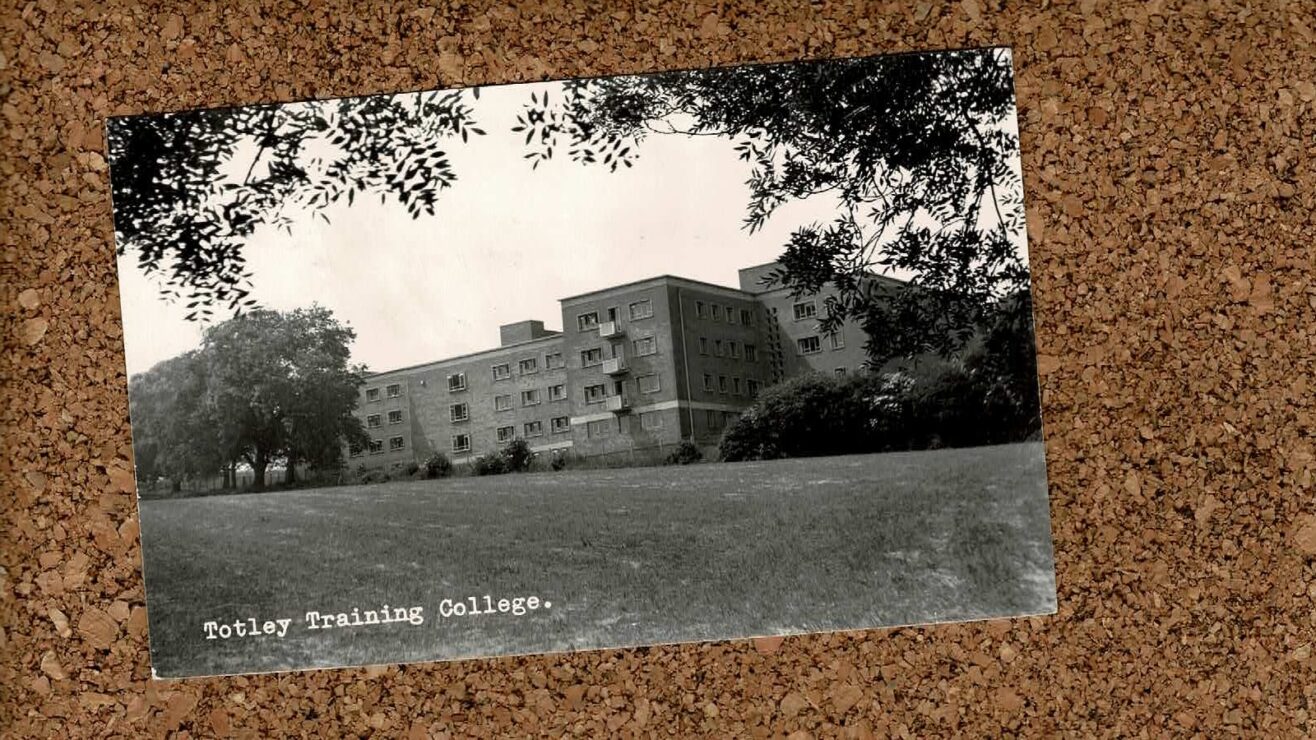Depending, apparently, on whether you’re a provider or a student, there’s lots to be grumpy or thrilled about in OfS’ new Condition E6 on harassment and sexual misconduct.
There’s also stuff to be really ashamed of – especially in the Savanta polling accompanying the launch:
Among the 10% of students who have had a relationship with a member of university staff in the last year, half (51%) say the staff member is/was involved with their education and/or assessment, such as a lecturer, tutor or supervisor, and half (52%) say the staff member has/had a pastoral or non-academic professional responsibility for them, such as a student welfare worker, sports coach or security personnel.
Among those who have had a relationship with a member of university staff in the last year, a third (35%) say they felt pressure to begin, continue or take the relationship further than they wanted because they were worried that refusing would negatively impact them, their studies or career in some way, even if the member of staff did not say or imply that would happen.
Three in ten say the staff member stated or implied that refusing might negatively affect them, their studies or career in some way, such as getting worse grades (31%) or that doing so would mean they would be treated more favourably, such as getting better grades (31%). Only one in six (16%) say that none of the aforementioned forms of coercion applied to their incident(s).
Other than the intimate relationships with staff members already discussed, one in six (15%) students say a university staff member has attempted to pressure them, either in person or online, into an intimate relationship (sexual, romantic, emotional, financial). This is either by stating or implying that doing so would mean they would be treated more favourably (8%) or that refusing them might negatively affect them or their studies or career (7%).
Nearly half of those who have experienced pressure to engage in an intimate relationship say the staff member is/was involved with their education and/or assessment (46%), or has/had some pastoral or non-academic professional responsibility for them (46%).
Among those that know of an intimate staff-student relationship in the last year, almost seven in ten (68%) agree that it appears/appeared to be consensual, with 10% disagreeing. Over half (54%) agree that the student is/was worried that ending the intimate relationship might negatively affect their studies or their career. Almost half agree the student felt pressured into the relationship because they would gain favourable treatment (45%) or that by refusing it might negatively affect their studies or career (44%). Interestingly, male students are significantly more likely than female students to agree that the student felt pressured either by positive coercion (55% vs 33%) or negative coercion (54% vs 32%).
One in ten are aware of an intimate staff-student relationship that ended. Among the 10% of respondents who are aware of an intimate staff-student relationship that ended or where the student rejected the advances of a staff member in the last year, a third (33%) believe the student experienced adverse or derogatory behaviour from the staff member. This includes shaming or rumour spreading. A quarter (26%) believe the student lost access to essential resources or activities, such as work placements, and almost a quarter say the student changed their module or course to avoid choosing a particular module/course (23%) or changed university (23%). A further 9% say that the student changed their career.
Elsewhere on the site my colleagues Sunday Blake and Livia Scott explain where the disagreements were in the consultation, and what the regulator has resolved as a result.
But as well as what is in there, there’s plenty that isn’t. And with MEDR on the way in Wales, there’s a good opportunity for that new regulator to avoid some of these mistakes as it develops its regulatory framework.
Not just sexual
One thing I’m very disappointed by is the absence of material on racial harassment – and its interaction with freedom of speech.
The framing back in 2023 and the framing now is very centred on sexual harassment and misconduct – with racial harassment (which is covered) confined to “Annex D: Additional evidence of harassment and sexual misconduct in higher education”. See also harassment of those with protected beliefs.
That’s all bad enough in and of itself – and matters a lot because of what we know about students not understanding what is and isn’t acceptable. But as well as all that, if one thing has dominated the casework this year, it’s the interaction between that and freedom of speech.
And while I expect given the initial framing has meant few reflected on it in their responses, I can guarantee that in the OfS consultations on freedom of speech since December, this question will have come up a lot.
For an entire chapter in the document on the interactions with free speech not to mention many of the types of scenario that are in the regulator’s consultation on FoS is just downright unhelpful.
And when pretty much the only mention of antisemitism is buried in footnotes – hedging its bets on which definition to use and not discussing the way any definition can be contested in practice – is pretty shameful:
CST defines an antisemitic incident as any malicious act aimed at Jewish people, organisations or property, where there is evidence that the act has antisemitic motivation or content, or that the victim was targeted because they are (or are believed to be) Jewish. This is a narrower definition than that used by the criminal justice system, which defines an antisemitic hate incident as ‘Any non-crime incident which is perceived by the victim or any other person, to be motivated by a hostility or prejudice based on a person’s race/religion or perceived race/religion.’ CST states that ‘The International Holocaust Remembrance Alliance (IHRA) working definition of antisemitism is a useful guide in identifying the different types of antisemitic language that may be used in an incident.’
Oh – and given OfS’ not-so-coded suggestion that reporting microaggressions be stopped in the name of free speech over in the free speech consultations, I’m amazed that’s not been mentioned here.
Timeliness
Something else not really covered is timeliness of investigations and processes. One of the hardy perennial complaints from SU officers that we hear when delivering training over the summer is astonishing backlogs and delays, made even worse for final year or 1-year PGTs. Providers should be asked to publish stats on it.
Small providers
One thing that’s especially disappointing concerns size. A few recommendations were killed or softened if the provider is small – eg someone different supporting victim and perpetrator, and so on.
But the smaller the provider, the more important it is to have independence, checks and balances that students would trust, and so on. Hence the spate of incidents in performing arts providers.
If it was up to me, any provider with less than, say, 1000 students would at least arrange reporting and investigation to be handled by another provider – and I’d be ensuring groups of small and specialist SUs jointly employ staff both for this condition and wider student casework.
Sector issues
Something that’s really frustrating is the lack of recognition of how sectory a lot of this stuff is. Students harass each other across providers in cities. Staff move between providers. And so on. Universities aren’t hermetically sealed bubbles – and some nudge towards collaboration would have been apposite.
The General Medical Council regulates doctors in the United Kingdom. It sets standards, holds a register, quality assures their education and training and investigates complaints.
Members of the public – and crucially patients – can’t just complain about anything. What will be looked at are serious or repeated mistakes in patient care, an abuse of the professional position (for example an improper sexual relationship with a patient), violence, indecency or sexual assault, discrimination and fraud or dishonesty.
Can anyone think of why students shouldn’t be able to make complaints to an external body within a similar frame of abuse of power?
Panels
One thing almost completely missing is disciplinary panels and hearings. Weirdly better panels was in the statement of expectations – and then disappeared.
I’ve heard shocking stuff – they need proper training, proper processes, a proper understanding of natural justice principles, and no more “plonk an SU sabb on” please.
It’s not 1974 – universities should do student panel members properly, paid and from a trained pool overseen jointly by the university and SU.
Students’ unions
One thing that is odd is that the material largely ignores clubs and societies and SUs – like they’re not the setting for a lot of the issues that are raised in the document.
What OfS appears to be saying is that if there’s harassment between a staff member and a student, or between a student and a student, it should be reportable to the provider for resolution. But it’s still not very clear. All OfS has said is “addressing harassment and sexual misconduct of students carried out by individuals who are neither [university] staff nor students of a provider would be consistent with compliance with the condition”, but everyone needs to clock that students don’t really understand that SU staff are employed by a separate charity.
It all matters because in some universities a student complaining about another student can be handled in both the SU and the university – with different processes and standards. In some universities, if a complaint is in the context of a club or society or an SU event, it is given to the SU to deal with.
I think that’s unacceptable. It’s also often in places where the SU is independent and autonomous over harassment, but can’t change a lightbulb without filling in an Estates form in in triplicate.
Back in 2021 we collaborated with SUs on a case review, and out of that for me this is dead simple. All student complaints about conduct should go to the university. If the SU wants to run a welcoming front end on that for signposting, that’s fine. But there should be no investigating in an SU and no panels if the conduct alleged fits the OfS definitions.
That means a university can and should do suspension of SU membership and / or some club and soc activity if necessary, and of course some proper data sharing and referral agreements need to be codified and in place – no more quiet words on the phone.
Then you have to think about SU staff and their full-time officers. Again I think it’s simple. SU staff should be treated as staff in the university policies, and student leaders treated as students. Same for sports coaches and so on.
Oxbridge
One thing not covered is Oxford and Cambridge (or, I might add, structures like the Durham or York colleges).
In the free speech act, a workaround was developed allowing there to be a separate code in each college – formally defined as constituent institutions.
But there’s no such material here. That implies that both universities now need a single, proper, central process. None of this “you can go to the centre if you want” nonsense. And no more “we must protect the star researchers” or “I assume they’ll protect the star researchers so I won’t complain”.
Prevalence
I’m also disappointed by the very vague “we may” on rolling out national prevalence research.
In 2022 OfS CEO Susan Lapworth said:
…if we can collect prevalence data that gives us a picture across the sector as a whole and an understanding of which kinds of students in which contexts are affected by this, and if we can then see that for individual universities, that lets us target our interventions. So a university with high prevalence and low reporting would perhaps raise concerns for us – and we would want to then understand in detail what was going on there and that would allow us to focus our effort.
Either do it nationally or mandate it locally. But if the above argument holds then there needs to be a plan.
Open secrets
One thing I’m also disappointed not to see in the material is a duty on staff to report in if they become aware of harassment or sexual misconduct, including rumours. They have a version of it in the Netherlands, and the sky hasn’t fallen in.
You have to be careful on how you do it to avoid students being reluctant to disclose – but it would in principle stop all those open secrets. A duty of “candour” would also help.
Strands of harassment
There are no mentions in the material from OfS on fieldwork vulnerability, initiation ceremonies and spiking. All have been the subject of national work that’s largely been the subject of the usual PDF-ignore cycle – all should have been mentioned.
NDAs
Something I can’t fathom is the ban on NDAs not extending to all complaints. Why? You’re not allowed to NDA folk complaining about harassment but you can if you’ve messed up their reasonable adjustments? Come on now.
Ramp on, ramp off
In the long section on staff-student relationships, I’m quite disappointed to see nothing on the way relationships start, and what happens if they go wrong.
I generally take the view that (mainly) women students should be able to go about their business in education without being hit on by (some, usually much older) men. I’d prize that right above other “consenting adults” stuff.
And when a relationship goes wrong, not only are students likely to feel very uncomfortable, they’re also less likely to report if they think staff all talk to each other.
That’s why a ban is right – and the focus on direct supervisory responsibility is so wrong.
Upstream
In the sexual misconduct prevalence survey pilot 2023 data, we get all sorts of characteristics splits – but partly because of the universities that opted to take part, nothing on provider type.
That matters because in 2021, a HEPI survey showed that privately educated males were a particular problem – and they’re more likely to be in the Russell Group, none of whose members took part in the prevalence work.
In APP work there’s a focus on upstream interventions. There should be a similar focus on it in this agenda – but in a very different set of schools.
Risk-based
There is vague stuff on “understanding your own students” in the material, but bafflingly no proper link to access and participation and crucially no formal push towards the sort of risk-based approach in the Equality of Opportunity Risk Register.
As I said here, adopting a risk-based approach to opportunities and equality compliance would be controversial – it would involve gathering perception and prevalence data from students and staff, and being internally institutionally honest about the areas where focus should be, given the different sized and shaped-risks.
It would also involve pointing out to people that lead departments or student groups or activities that they are leading a pocket of risk. The president of men’s rugby won’t like it. But it would be worth it.
PSHE
Consent and harassment are not the only issues that students need awareness, education or training on.
In the tragic Ed Farmer initiation case, the coroner called on universities to provide an induction for all first year students covering the risks of consuming alcohol in large quantities, guidance on caring for those who are drunk, and explanation of the correlation between initiation events and a heightened risk of serious harm, injury or death.
If they’re to be assessed on presentation or over group projects, students want training on presentation skills and working in teams. There are also regular calls for training and education on climate change, on gambling and drugs harms, on mental health, on handling money, on wider EDI issues, and on entrepreneurship.
And then there’s the academic skills and “hidden curriculum” training that is required when a university recruits a significant number of international students whose academic traditions have been different, and when a university recruits a significant number of students from disadvantaged or “first in family” backgrounds who just haven’t been “schooled” in the way everything works.
Accepting that these agendas are happening and needed, integrating them in ways that make sense for students, creating demand to engage in them enthusiastically (or at least universally) and then delivering them in a way that carves capacity from dangerously busy weeks for those involved in them is really the only sensible way to address them. The sooner that universities come to terms with that the better.
And on that, if a student fails the consent course, in what world should they still be on campus? And as such, in what world is it not assessed as pass/fail? Many of the social, interpersonal and sexual mistakes that we used to regard as treatable with a clip around the ear would now rightly result in a disciplinary investigation.
I wrote about the secret codes issue and the PSHE problem a whole ago on the site.
No rush
One final thing. The thing I’m viscerally angry about is that the staggering delay in publishing, coupled with the extended grace period to get everything in place, means that what should have been a September 2023 roll out is now September 2025.
I can’t find anything in the documents that looks like it had to wait. Why on earth wasn’t this published and out of the door in June 2023? Why, given the prevalence data, are students having to wait two more years?
September will be a full sixteen years since Hidden Marks. The idea that a group of ideologues managed to get bespoke legislation on HE freedom of speech with its own complaint scheme and dedicated OfS tsar in a third of that time should worry us all.














Re “structures like the Durham colleges”: I would like to make clear that conduct policies and procedures at Durham are most definitely centrally managed and are not the preserve of individual colleges. It’s not fair to implicitly claim that Durham suffers from the problems you assert are to be found at Oxford and Cambridge.
Likewise Jim makes no effort to understand the York Colleges – which to all legal intents and purposes are glorified halls of residence. Never let facts get in the way of a (lengthy) polemic.
Thanks both. A cursory glance at three constitutions of Durham colleges suggests that in each of the ones I examined, disciplinary/conduct cases are only referred centrally once investigated and resolved locally. In the York case the activities bodies are actually legally handled by the SU whose disciplinary policy does not contain formal referral triggers into the university. Clear to me that both need attention.
Hi Jim. I’d be very interested to know which constitutions these were that you glanced at cursorily, as no Durham college has such a thing as a constitution. The two smallest are independent charities and have Memoranda of Association and Articles of Association. The other 15 are not legally separate from the University. All 17 work in the same way as regards student conduct. What you state above is not true for any of them. There is no sense whatsoever in which college procedures must be exhausted before recourse to the centre. Serious allegations, or allegations made directly to the… Read more »